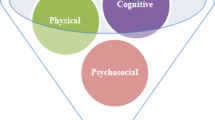Abstract
Virtual reality (VR) has been used both to simulate situations that are too dangerous to practice in real life and as a tool to help children learn. This study was conducted as part of a larger more comprehensive long-term research project which aims to combine the two techniques and demonstrate a novel application of the result, using immersive VR to help children learn about fire hazards and practice escape techniques. In the current study, a CAVE was used to immerse participants in a fire scene. To improve the children’s motivation for learning over prior VR fire-safety training methods, game-like interface interaction techniques were used and students were encouraged to explore the virtual world. Rather than being passive viewers, as in prior related studies, the children were given full control to navigate through the virtual environment and to interact with virtual objects using a game pad and a 6DOF wand. Students identified home fire hazards with a partner and then practiced escaping from a simulated fire in the virtual environment. To test for improved motivation, a user study was completed. Results indicate that students were more engaged by the new game-like learning environment and that they reported that they found the experience fun and intriguing. Their enhanced enthusiasm for what is relatively standard fire-safety information demonstrates the promise of using game-based virtual environments for vital but otherwise tedious fire-safety skills training for children.











Similar content being viewed by others
References
Elliott J, Adams L, Bruckman A (2002) No magic bullet: 3D video games in education. In: Proceedings of international conference of the learning sciences 2002. Seattle, WA
Ericson E, Smith S (2008) Using immersive virtual environments for realistic life-size fire prevention and safety training for children. In: The 3rd IASTED international conference on human-computer interaction. Innsbruck, Austria, Paper Number 611-053
Haller M, Kurka G, Volkert J, Wagner R (1999) omVR—a safety training system for a virtual refinery. In: Proceedings of ISMCR 99. Topical workshop on virtual reality and advanced human robot systems, Tokyo, pp 291–198
Kaufmann H, Schmalstieg D, Wagner M (2000) Construct3D: a virtual reality application for mathematics and geometry education. In: Education and information technologies, pp 263–276
Ketelhut DJ, Dede C, Clarke J, Nelson B (2006) A multi-user virtual environment for building higher order inquiry skills in science. In: Paper presented at the American Educational Research Association, San Francisco
Kizil MS, Joy J (2001) What can virtual reality do for safety? St University of Queensland, Lucia, QLD
Li L, Zhang M, Xu F, Liu S (2005) ERT-VR: an immersive virtual reality system for emergency rescue. In: Virtual reality, pp 194–197
McAllister DK (2000) The Design of an API for Particle Systems. UNC Computer Science Tech Report
Mungai D, Jones D, Wong L (2002) Games to teach by. In: Proceedings of the 18th annual conference on distance teaching and learning. Madison, WI
Ohlsson S, Moher T, Johnson A (2000) Deep learning in virtual reality: how to teach children that the Earth is round. In: 22nd annual conference of the Cognitive Science Society, Philadelphia, PA, pp 364–368
Padgett LS, Strickland D, Coles CD (2006) Case study: using a virtual reality computer game to teach fire safety skills to children diagnosed with fetal alcohol syndrome. J Pediatr Psychol Adv Access 31:65–70
Pehrson R (2004) Fire behavior. In: Cote AE (ed) Fundamentals of fire protection. NFPA, Quincy, MA, pp 101–133
Randall J, Jones RT (1993) Teaching children fire safety skills. Fire Technol 29(3):268–280
Roussou M (2004) Learning by doing and learning through play: an exploration of interactivity in virtual environments. ACM Comput Entertain 2(1):1–23
Roussou M, Johnson AE, Moher TG, Leigh J, Vasilakis CA, Barnes CR (1999) Learning and building together in an immersive virtual world. In: Presence, pp 247–263
Roussou M, Oliver M, Slater M (2006) The virtual playground: an educational virtual reality environment for evaluating interactivity and conceptual learning. In: Virtual reality, pp 227–240
Sherman WR, Penick MA, Su S, Brown T, Harris FC (2007) VR fire: an immersive visualization experience for wildfire spread analysis. In: IEEE virtual reality conference. Charlotte, NC, pp 243–246
Stansfield S, Shawver D, Rogers D, Hightower R (2005) Mission visualization for planning and training. IEEE computer graphics and applications, pp 12–14
Sulbaran T, Baker NC (2000) Enhancing engineering education through distributed virtual reality. In: ASEE/IEEE frontiers in education conference. Kansas City, MO, pp 3–18
Tate DL, Silbert L, King T (1997) Virtual environments for shipboard firefighting training. In: Proceedings of the IEEE 1997 virtual reality international annual symposium. IEEE Computer Society Press, Buquerque, NM, pp 61–68
Thomson J, Tolmie A, Foot H, Whelan K, Sarvary P, Morrison S (2005) Influence of virtual reality training on the roadside crossing judgments of child pedestrians. J Exp Psychol Appl 11(3):175–184
United States Fire Administration (2002) Protecting your family from fire. Federal Emergency Management Agency
Vanacken L, Grossman T, Coninix K (2007) Exploring the effects of environment density and target visability on object selection in 3D virtual environments. In: IEEE symposium on 3D user interfaces. Charlotte, NC, pp 115–122
Author information
Authors and Affiliations
Corresponding author
Appendices
Appendix 1

Appendix 2

Rights and permissions
About this article
Cite this article
Smith, S., Ericson, E. Using immersive game-based virtual reality to teach fire-safety skills to children. Virtual Reality 13, 87–99 (2009). https://doi.org/10.1007/s10055-009-0113-6
Received:
Accepted:
Published:
Issue Date:
DOI: https://doi.org/10.1007/s10055-009-0113-6




